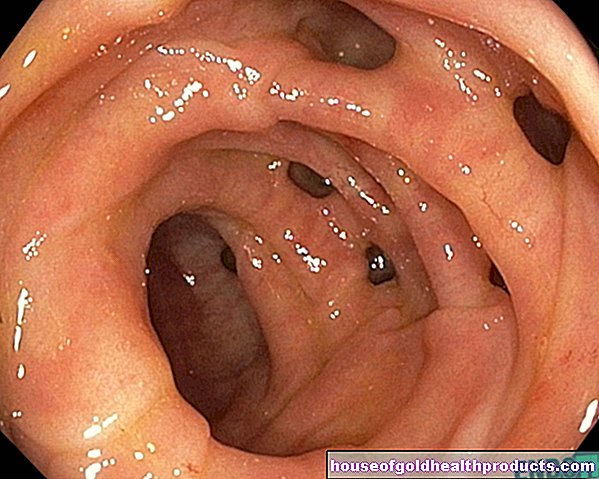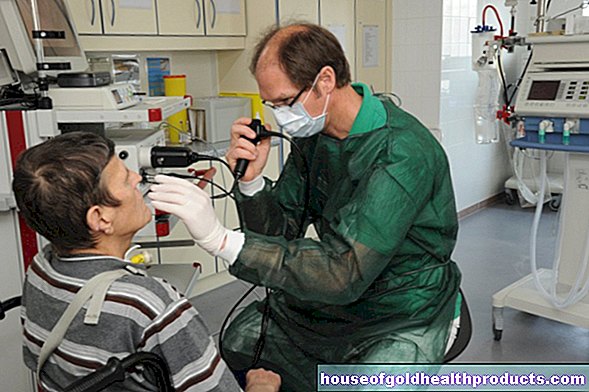"Antibodies are not proof of Lyme disease"
Kathrin Rothfischer studied microbiology and genetics in Regensburg after an excursion into German studies. Presenting complex issues in an easily understandable way was her passion even then. That is why she turned this passion into a profession after graduating: After various positions in the medical specialist publishing house and in the public press, she finally found her journalistic home at
More about the experts All content is checked by medical journalists.After a tick bite, many people are afraid of Lyme disease. It is often difficult to clearly prove the infectious disease. Borreliosis expert Prof. Dr. med. Heidelore Hofmann explains in the interview why a detailed examination is so important.

Prof. Dr. med. Heidelore Hofmann
Prof. Dr. med. Heidelore Hofmann is the coordinator of the AWMF guideline "Cutaneous Lyme Borreliose", former senior physician at the Department of Dermatology and Allergology at the Technical University of Munich and the Lyme disease consultation hour.
Prof. Hofmann, how does a Borrelia infection express itself?
The Borrelia infection usually goes unnoticed, only around five to ten percent of those infected fall ill. Lyme disease occurs in 80 to 90 percent of cases in the skin. In the form of the early infection, the so-called wandering redness or erythema migrans. The remaining 10 to 20 percent either develop acute neuroborreliosis with very severe, sciatica-like nerve pain that occurs mainly at night; or Lyme arthritis occurs, which is accompanied by a severely swollen and painful joint. Lyme carditis, in which the heart muscle becomes inflamed, or other organ diseases are less common.
Detecting these three most common forms of Lyme disease with certainty is not always that easy.
That's right, because we live in an endemic area (editor's note: geographical area in which Lyme disease occurs more frequently). Studies by the Robert Koch Institute for Germany show that the older a person is, the greater the likelihood of antibodies against Borrelia - simply because contact with the pathogen is so frequent. For example, 20 percent of those over 60 have Borrelia IgG antibodies in their blood.
Are these people all sick?
No, mostly not. The problem with this is that if the antibody result is positive, one often does not know whether the infection was a long time ago and has already healed, i.e. whether treatment is superfluous. Or whether the infection is fresh and requires prompt therapy.
But there are different types of antibodies that can be used to detect something like this.
Yes that's right. Still, there are uncertainties. An example: IgM antibodies in the blood usually indicate an acute infection. However, people with rheumatic diseases can also have elevated IgM antibodies without an acute illness. And the older you are, the more common this phenomenon occurs.
What does this mean for the patient?
Antibodies against Borrelia are not yet proof of a disease, but only show that the immune system has dealt with the pathogen. The wrong conclusion would be this: If antibodies are found and the person does not feel well, for example has symptoms such as joint and muscle pain, then this indicates chronic Lyme disease.
But are there really chronic forms of Lyme disease?
There is a small percentage of patients whose bodies are unable to kill Borrelia with its immune system. Then, for example, what is known as acrodermatitis chronica atrophicans occurs, also known as Herxheimer's disease. The Borrelia can often survive in the skin, mostly on the arms or legs, for decades. The affected areas of skin and often the underlying nerves become inflamed. Lyme arthritis can also become chronic if left untreated and must then be treated with antibiotics in any case.
However, people who suffer from what is believed to be chronic Lyme disease actually feel sick. Are they all hypochondriacs then?
No of course not. Such patients were examined in detail in a doctoral thesis that I had done during the Lyme disease consultation hour at the Technical University of Munich.
What was your conclusion?
Of the people who came to the consultation with suspected chronic Lyme disease, a third actually had Lyme disease before. In the course of life, other illnesses with symptoms such as joint pain, muscle pain, fatigue or listlessness came along. And the patients or their doctors wrongly related these symptoms, which occur in many diseases, to the previous Lyme disease.
And the other two thirds?
Another third suffered from completely different diseases such as degenerative muscle or joint diseases or autoimmune diseases, which were only discovered during the Lyme disease consultation hour. The last third, on the other hand, had psychosomatic complaints such as those that can occur with depression, anxiety disorders and chronic pain syndrome.
So if you have a positive antibody result you would have to do further tests and make a reliable diagnosis before treatment. Unfortunately, that doesn't always happen.
In fact, in the last few years a real, I'll call it “Borreliosis sect” has formed. For example, patients are told that if they don't take certain therapies, Borrelia can go to the brain and cause Alzheimer's.
What kind of therapies are these?
A combination of long-term antibiotic treatments with additives that supposedly strengthen the immune system and boost the immune system. Such a package costs a lot, up to 1000 euros per month, the patients told me. You have to pay for it out of your own pocket, because the health insurance does not cover it.
Several patient organizations and self-help groups have stopped the publication of the AWMF S3 guideline "Neuroborreliosis", on which more than 20 scientific societies have collaborated, with an injunction. Why?
The reason was that they believed that their dissent statements should be published in the guideline rather than in the guideline report. In the meantime, however, the lawsuit has been dismissed and the S3 guideline was published in April 2018.
The guideline contradicts the theory that persistent unspecific symptoms, despite inconspicuous diagnostics, are due to an undetected or inadequately treated infection of the nervous system with Borrelia.
As a rule, neuroborreliosis can be determined without any doubt. What certain patient associations and Lyme disease doctors consider chronic Lyme disease does not exist, and that is scientifically justified in the AWMF guideline.
What do these patient organizations and self-help groups refer to in their criticism?
There are symptoms that can occur after antibiotic treatment of Lyme borreliosis, but which are not caused by bacteria that are still alive, but rather by ongoing inflammation and the patient's immune reaction. It should not be treated with antibiotics but with anti-inflammatory drugs.
Prof. Hofmann, thank you very much for the interview.
Prof. Dr.med. Heidelore Hofmann is the coordinator of the AWMF guideline "Cutaneous Lyme Borreliose", former senior physician at the Department of Dermatology and Allergology at the Technical University of Munich and the Lyme disease consultation hour
Tags: sex partnership organ systems menopause





























